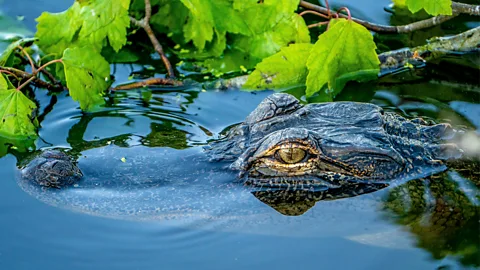How alligators are breathing life into Florida’s Everglades

The Everglades’ eclectic alligators are surprisingly diverse builders, bodyguards, commuters, and health-bringing engineers.
From the edge of the Miccosukee Indian Reservation, in the north of the Florida Everglades, it is a short fan-boat ride through grassy swamp to get to an island that 18-year-old Hector Tigertail’s family visit each year. For decades, this family “hammock” – as the tree-covered islands that poke out from the Everglades are known – has been their retreat; a place where the family can camp, cook and hunt. But they share this particular island with at least one permanent resident: an American alligator that, at around 7ft (2.1m) from nose to tail, is the largest female he’s ever seen.
Tigertail’s family, members of the Miccosukee Tribe of Indians of Florida, and this powerful reptile, which locals refer to as Mama Gator, have lived side by side for much of the 60-year-old animal’s life, he explains. This intimate coexistence provides a chance to observe how alligators meticulously shape their surroundings. Through the dry season between December and May, she excavates a “gator pond” with her snout, claws and tail, a depression where water pools and she can wallow, keep cool and mate. At the start of the rainy season (from June to November), she builds a raised nest for her clutch of eggs, from mud, grass and twigs – a time when the humans know to keep a respectful distance from the protective mother. In return, for the next few years, they are often rewarded with the sight of Mama and her baby gators in tow.
“We like to call her Mama Gator because she’s everybody’s grandma,” says Tigertail.
In recent years, scientific research is adding support to something Florida’s Miccosukee Tribe have long known: alligators like Mama play vital roles as “guardians of the Everglades” and engineer their environment in ways that protect freshwater ecosystems. Alligators carry around nutrients that feed ecosystem webs, and their ponds and nests provide refuges where plants, fish and frogs live. New data hints that that alligators may also benefit us.







